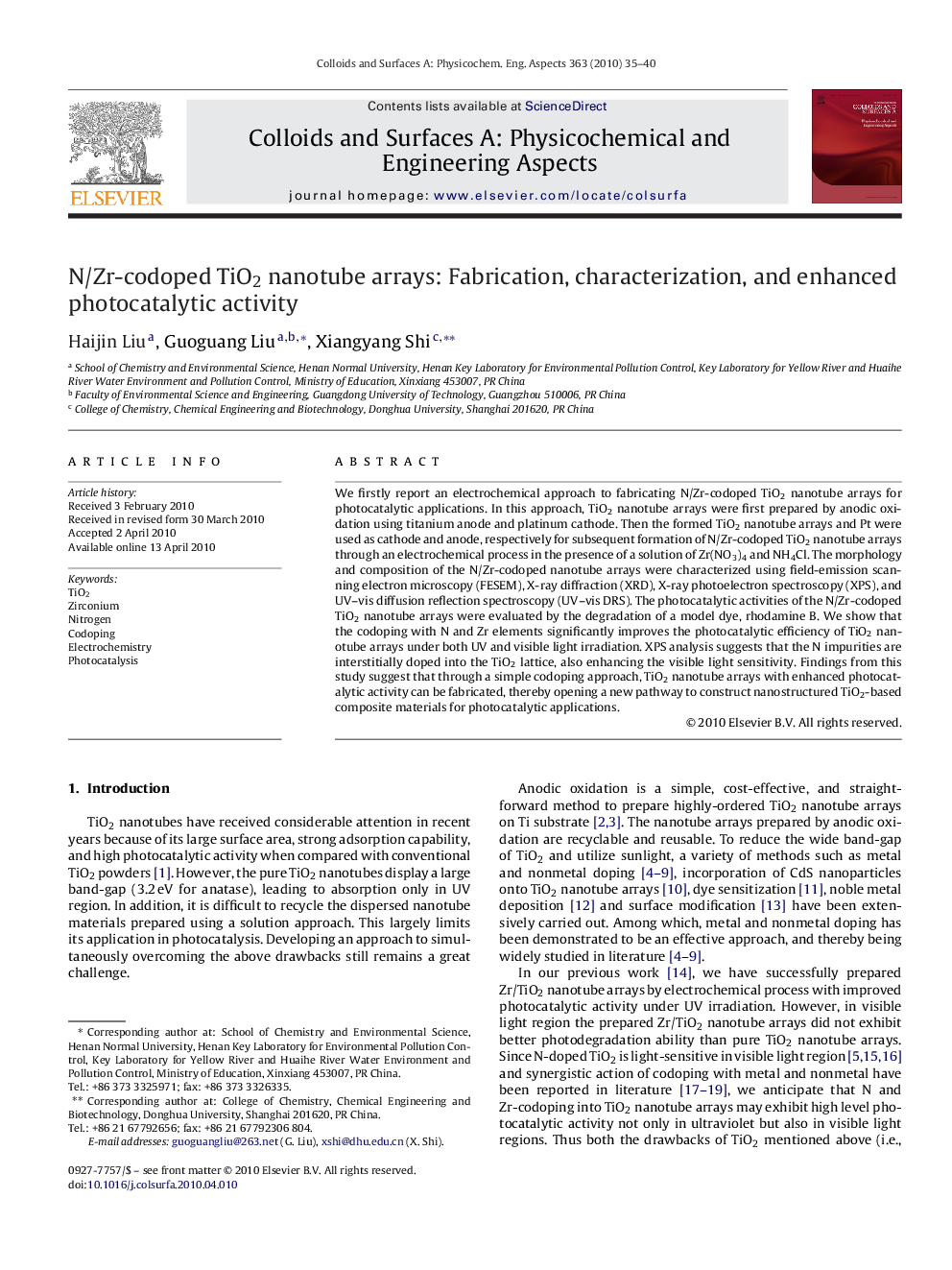| کد مقاله | کد نشریه | سال انتشار | مقاله انگلیسی | نسخه تمام متن |
|---|---|---|---|---|
| 595366 | 1454009 | 2010 | 6 صفحه PDF | دانلود رایگان |

We firstly report an electrochemical approach to fabricating N/Zr-codoped TiO2 nanotube arrays for photocatalytic applications. In this approach, TiO2 nanotube arrays were first prepared by anodic oxidation using titanium anode and platinum cathode. Then the formed TiO2 nanotube arrays and Pt were used as cathode and anode, respectively for subsequent formation of N/Zr-codoped TiO2 nanotube arrays through an electrochemical process in the presence of a solution of Zr(NO3)4 and NH4Cl. The morphology and composition of the N/Zr-codoped nanotube arrays were characterized using field-emission scanning electron microscopy (FESEM), X-ray diffraction (XRD), X-ray photoelectron spectroscopy (XPS), and UV–vis diffusion reflection spectroscopy (UV–vis DRS). The photocatalytic activities of the N/Zr-codoped TiO2 nanotube arrays were evaluated by the degradation of a model dye, rhodamine B. We show that the codoping with N and Zr elements significantly improves the photocatalytic efficiency of TiO2 nanotube arrays under both UV and visible light irradiation. XPS analysis suggests that the N impurities are interstitially doped into the TiO2 lattice, also enhancing the visible light sensitivity. Findings from this study suggest that through a simple codoping approach, TiO2 nanotube arrays with enhanced photocatalytic activity can be fabricated, thereby opening a new pathway to construct nanostructured TiO2-based composite materials for photocatalytic applications.
Figure optionsDownload as PowerPoint slide
Journal: Colloids and Surfaces A: Physicochemical and Engineering Aspects - Volume 363, Issues 1–3, 20 June 2010, Pages 35–40